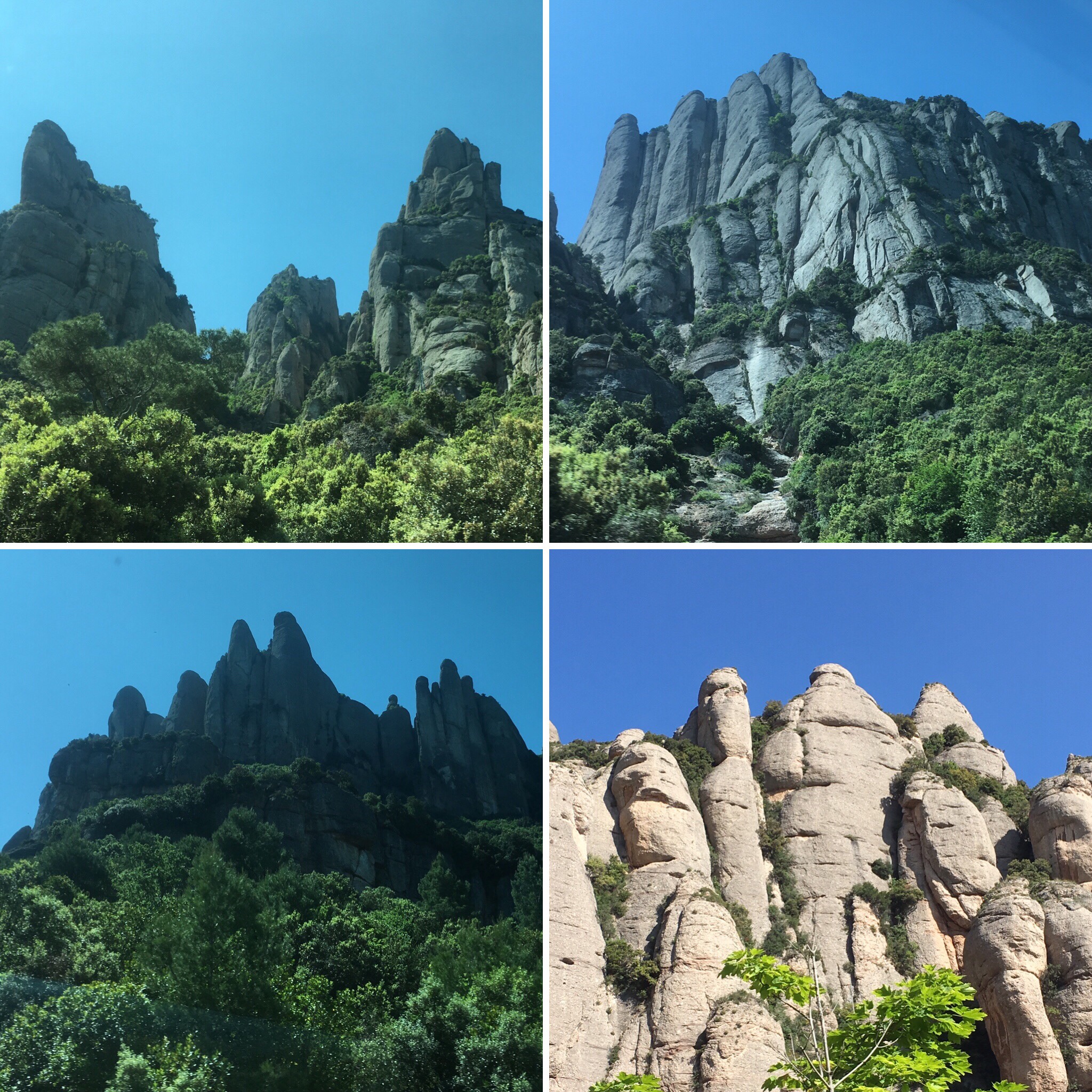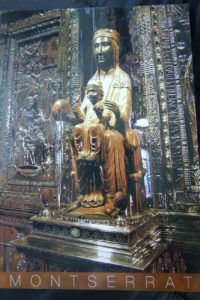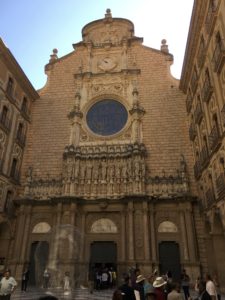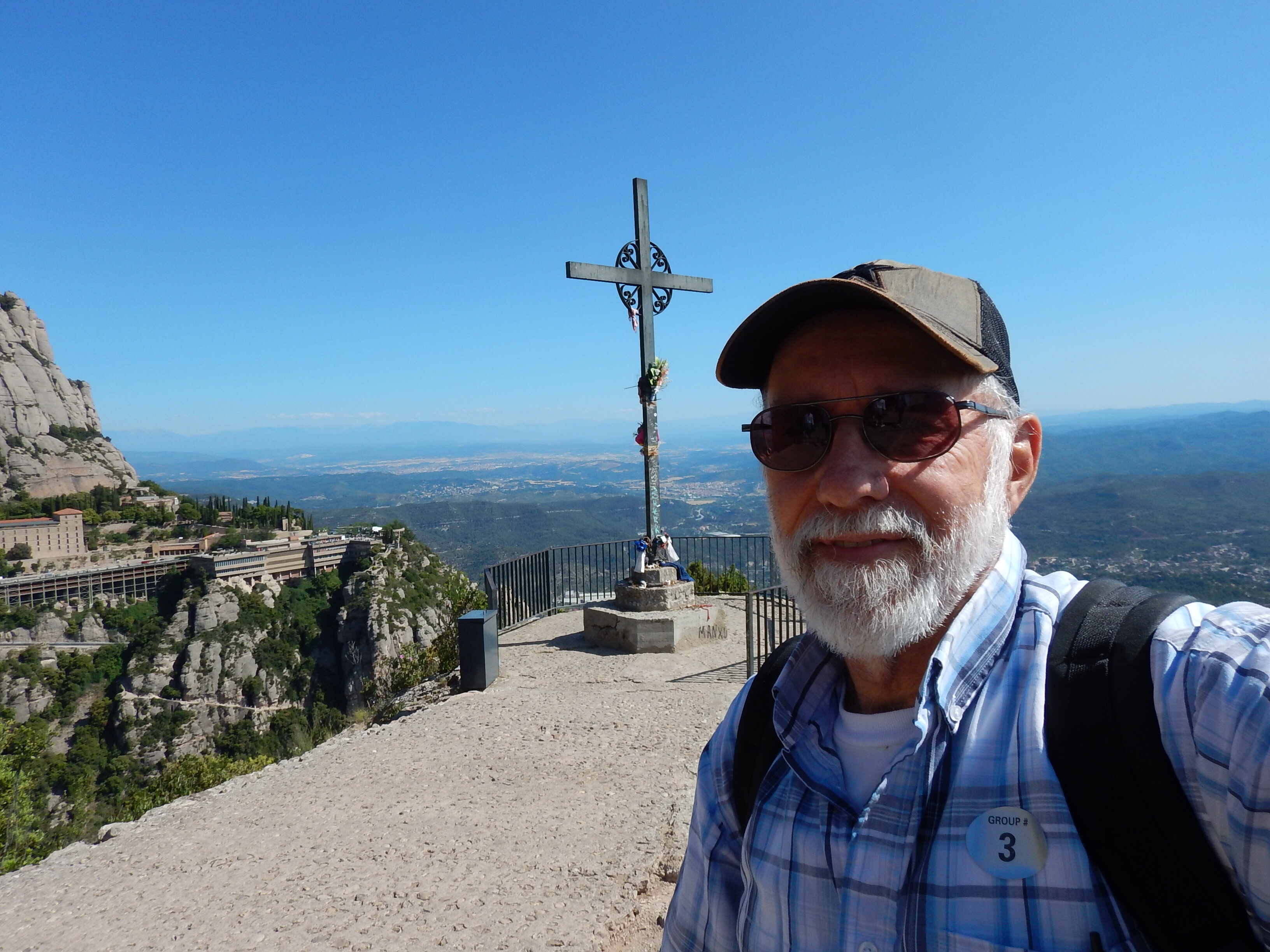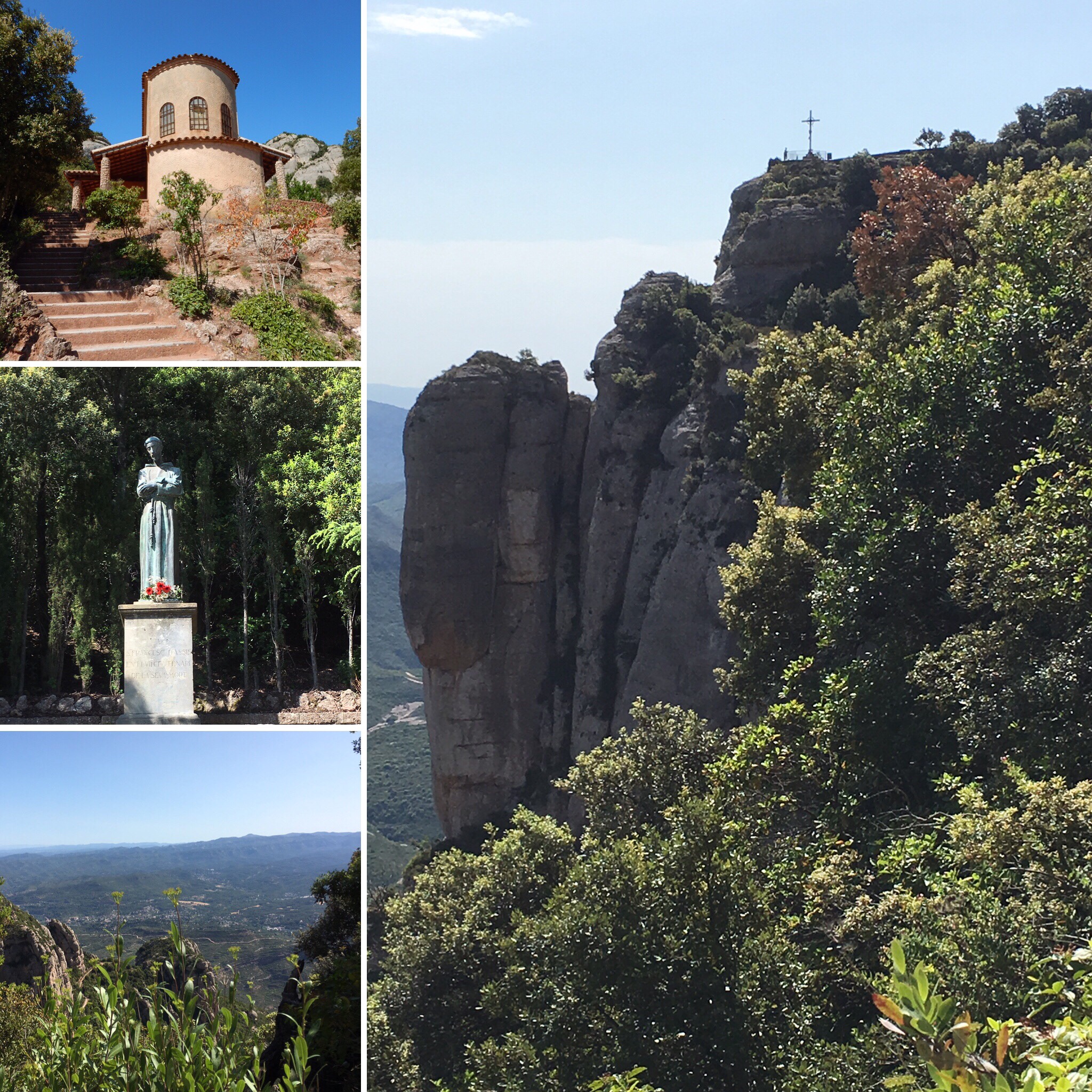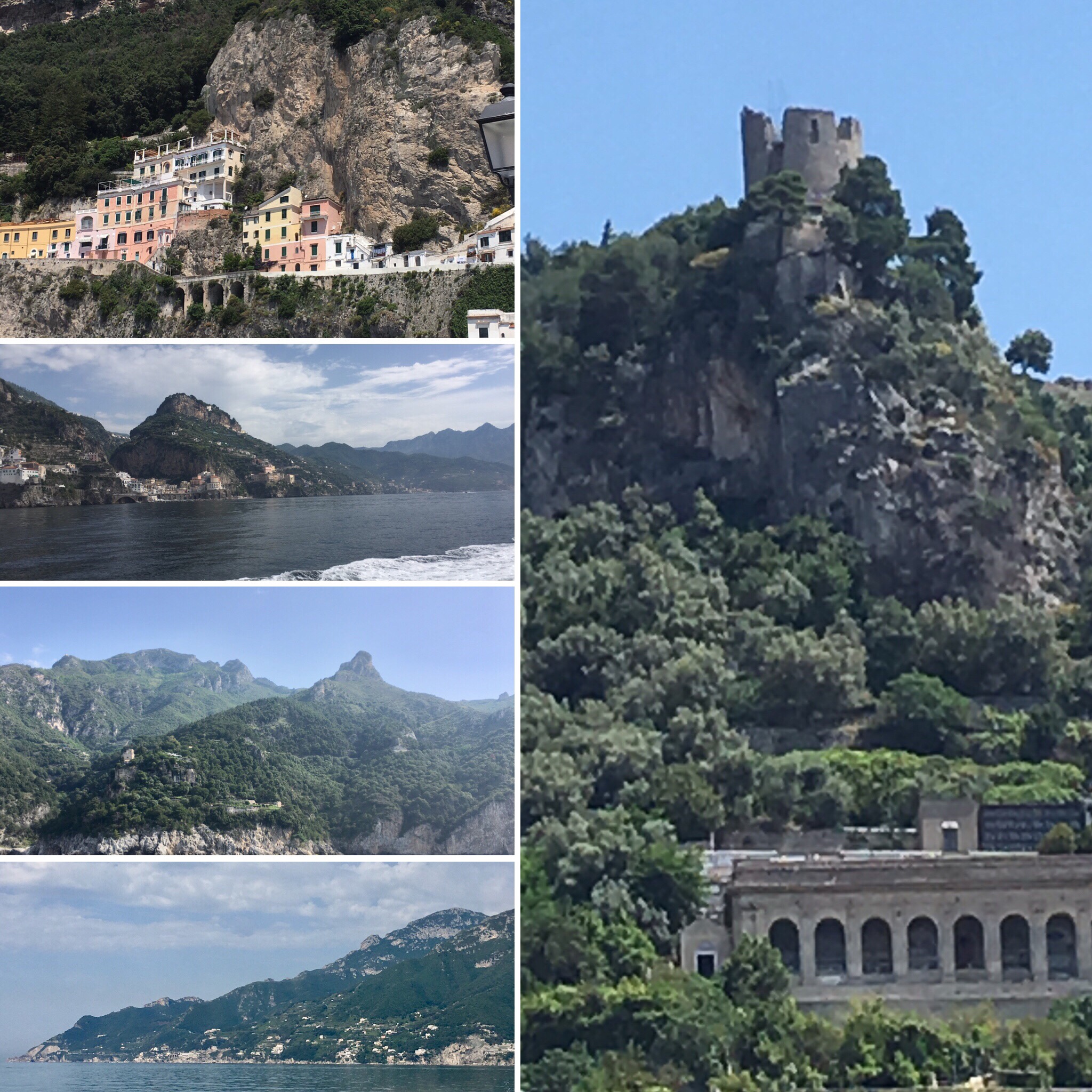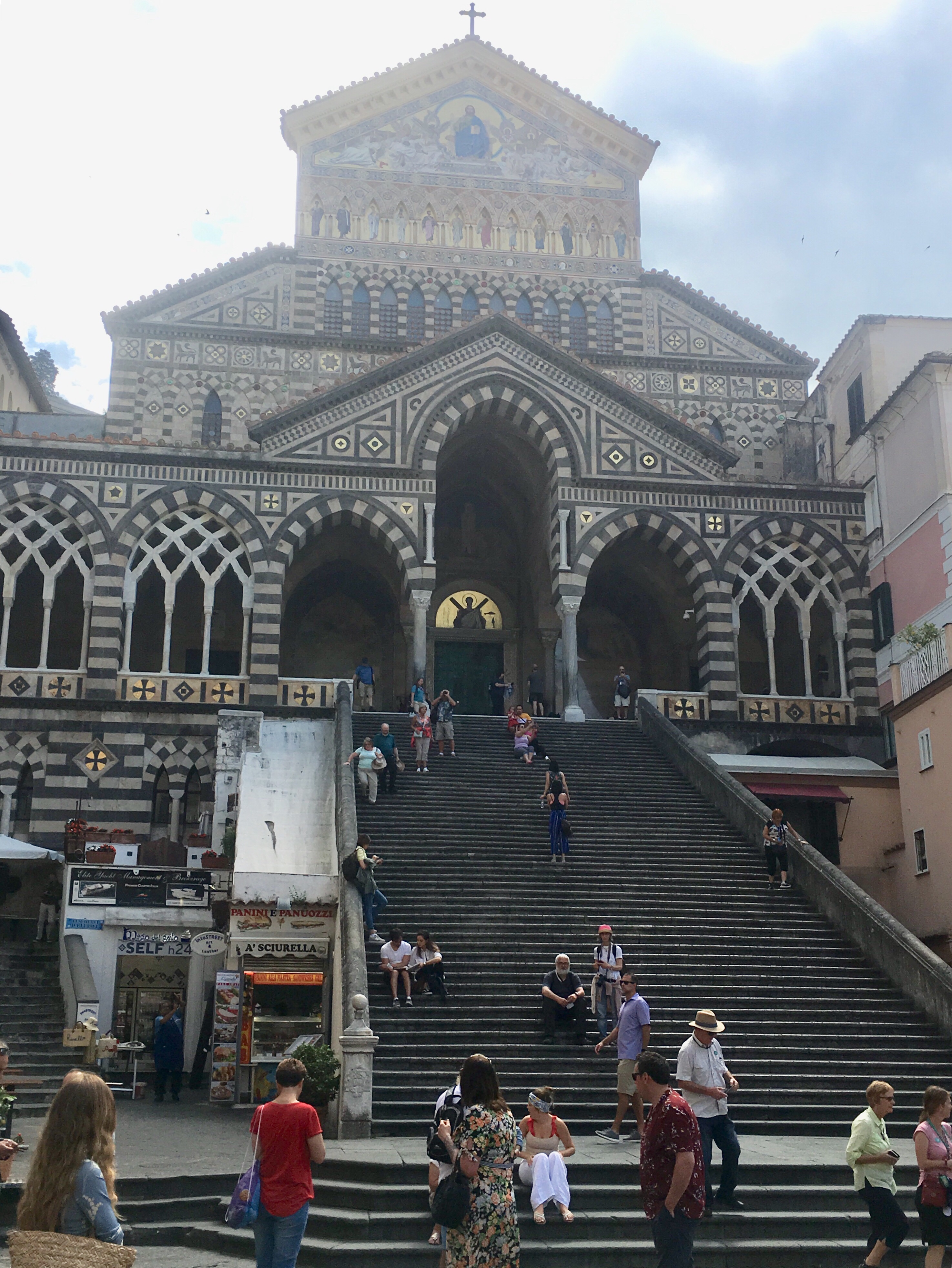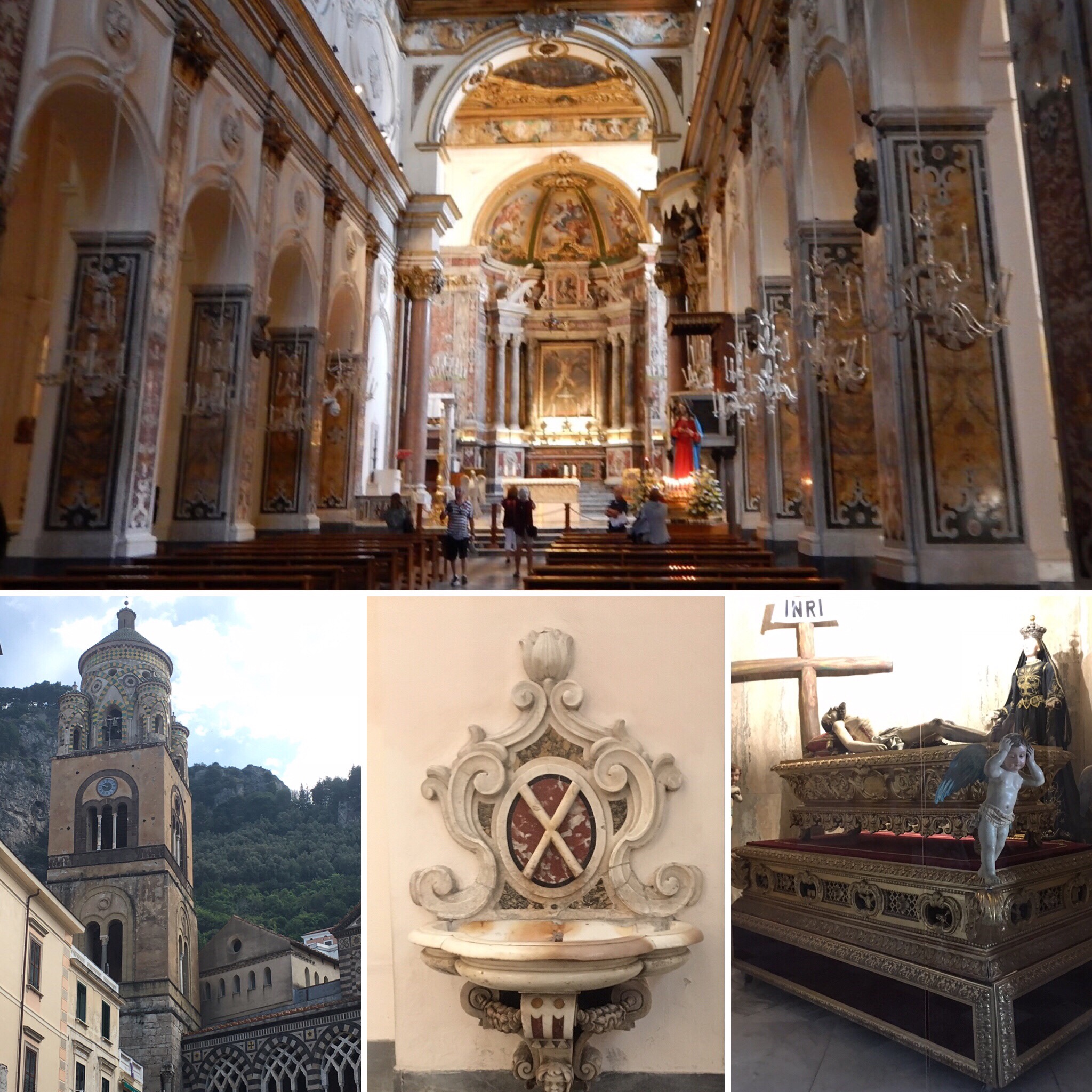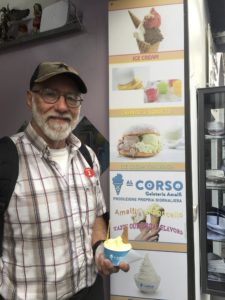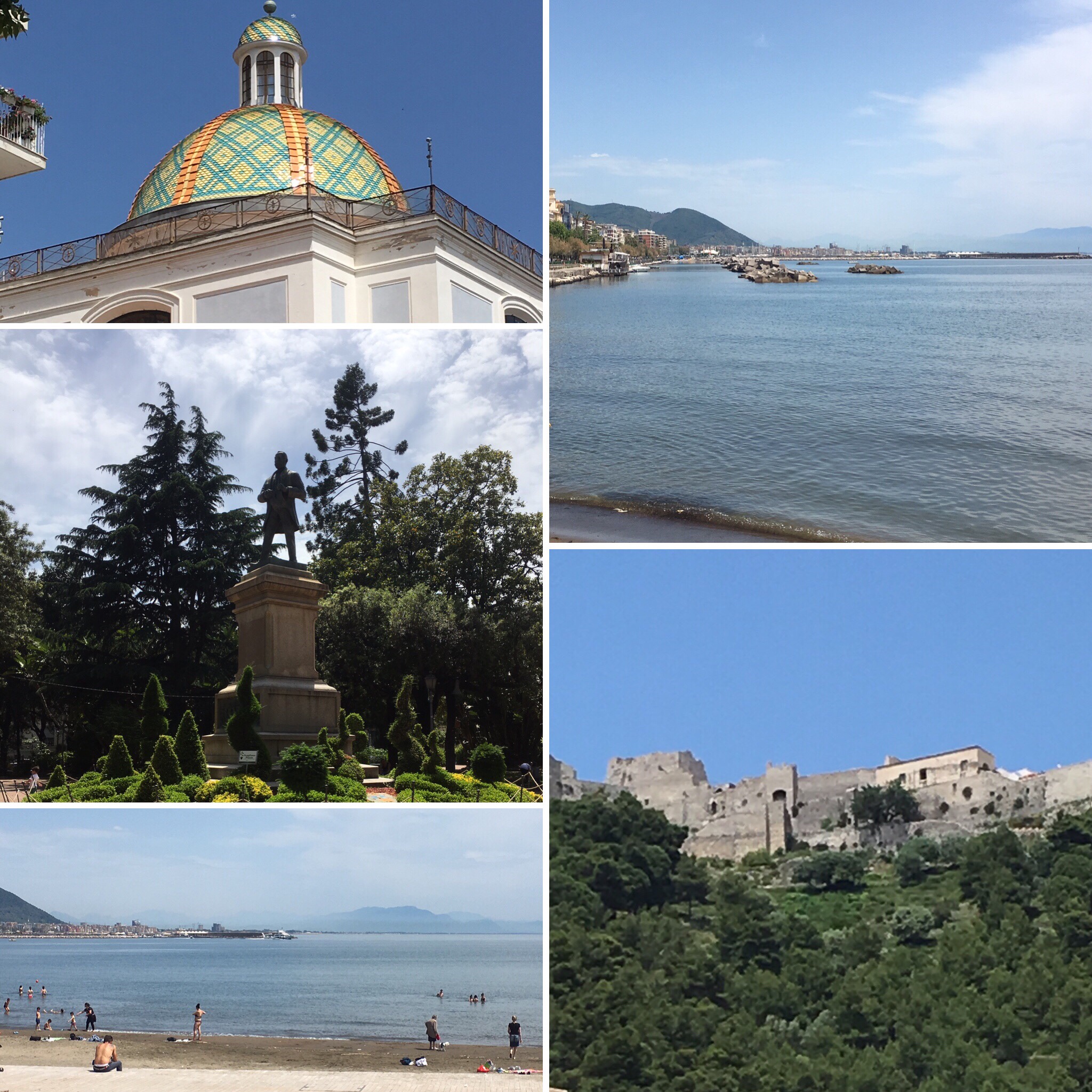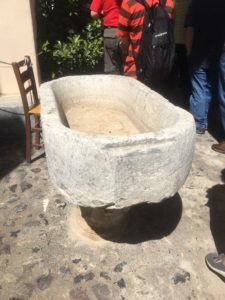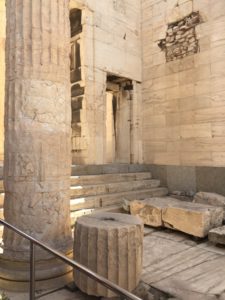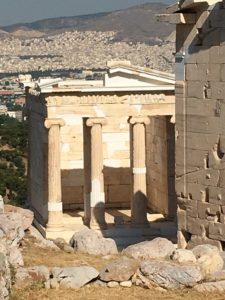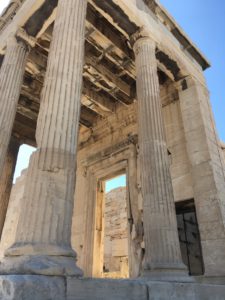“Thy righteousness also, O God, is very high, who hast done great things: O God, who is like unto thee!” Psalm 71:19
We traveled for about an hour north of Genoa to reach Milan. Most of the terrain were the foothills of mountains with occasional stretches of flat farmland. This agricultural region grows mostly grains such as rice and wheat.
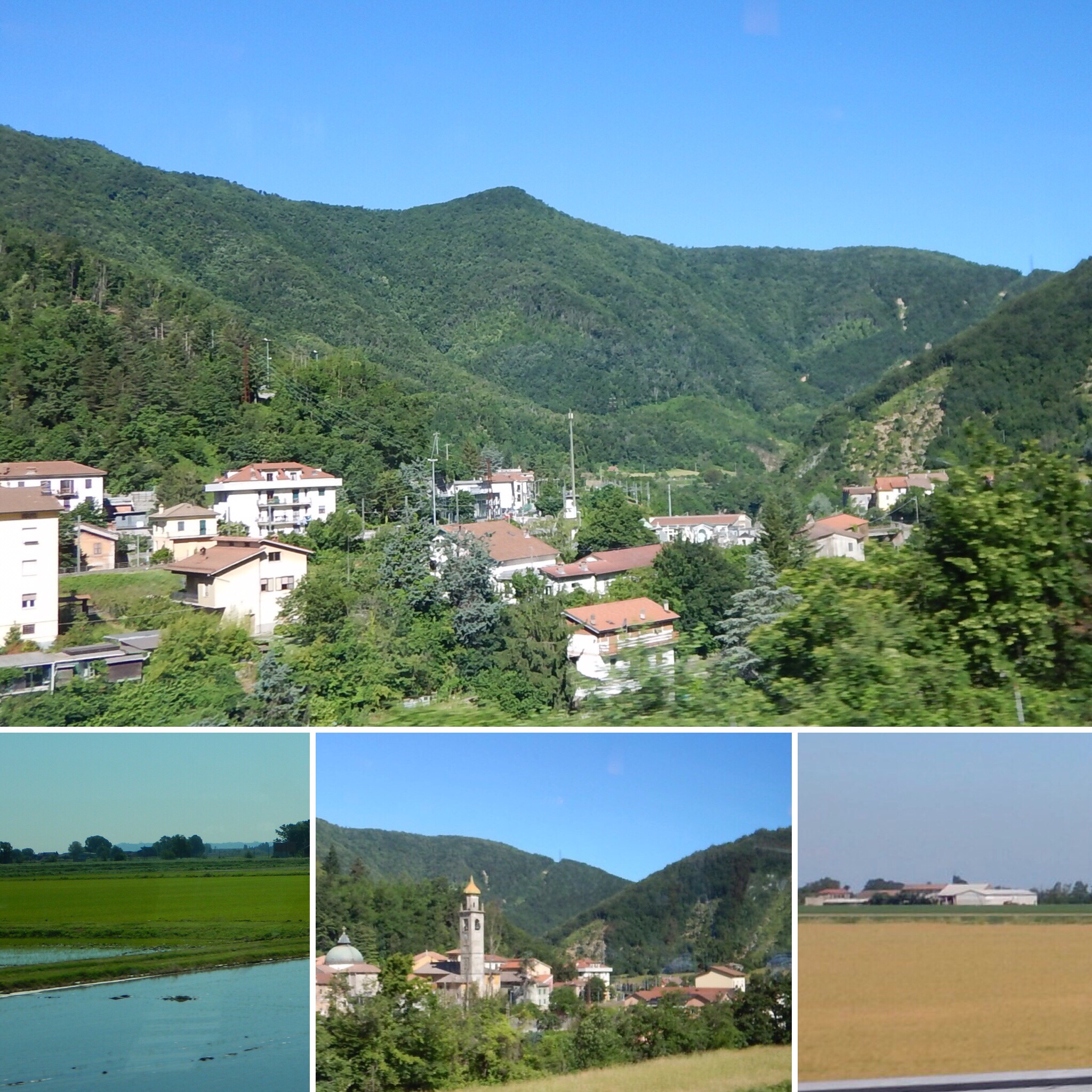
Castello Sforzesco
This castle was built at the end of the12th century and beginning of the 13th century. It has many frescoes, which are paintings painted directly on a freshly plastered wall. Many were done by Leonardo Da Vinci. Da Vinci lived here for a time and was commissioned by the king to paint “The Last Supper.”
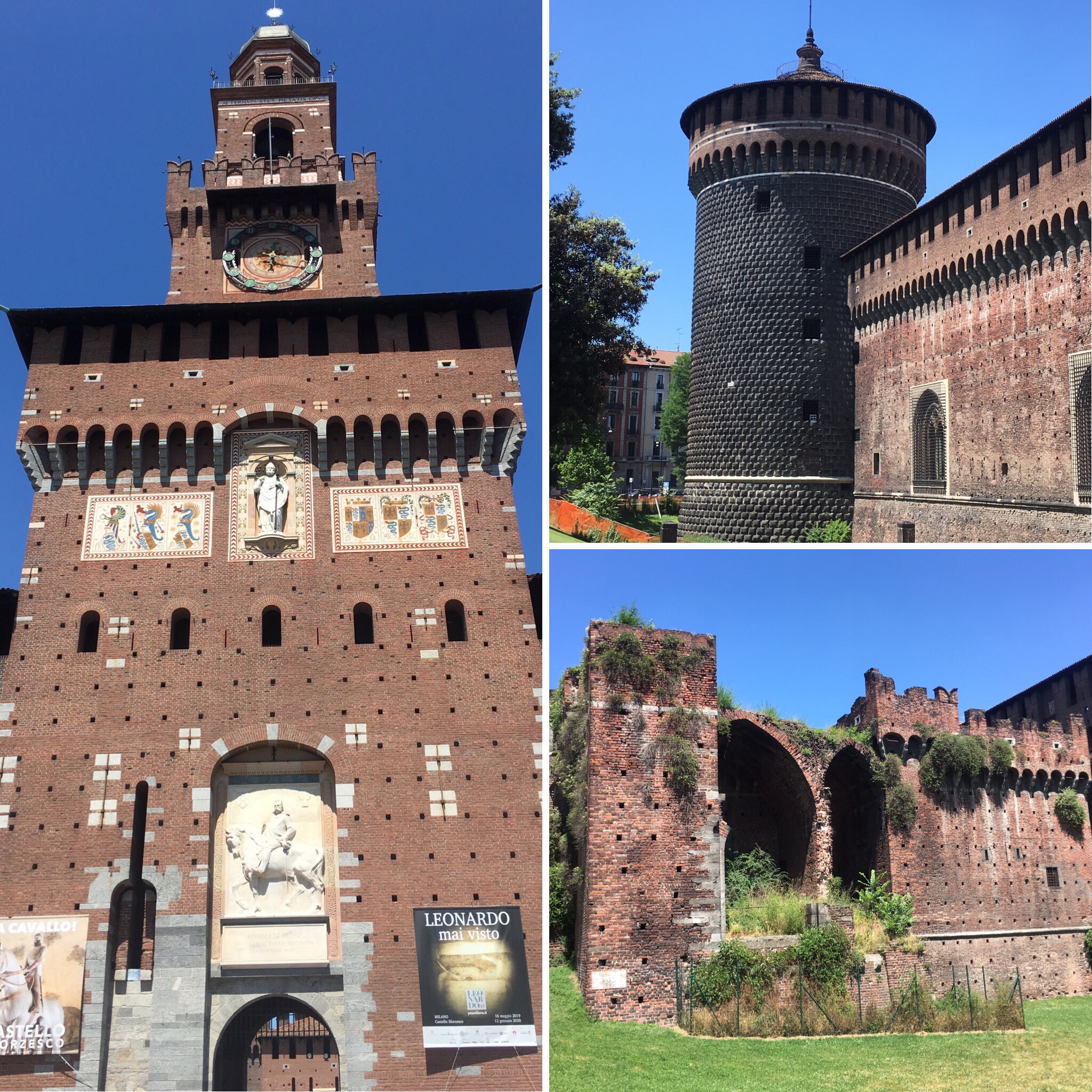
Church – Santa Maria Delle Grazie
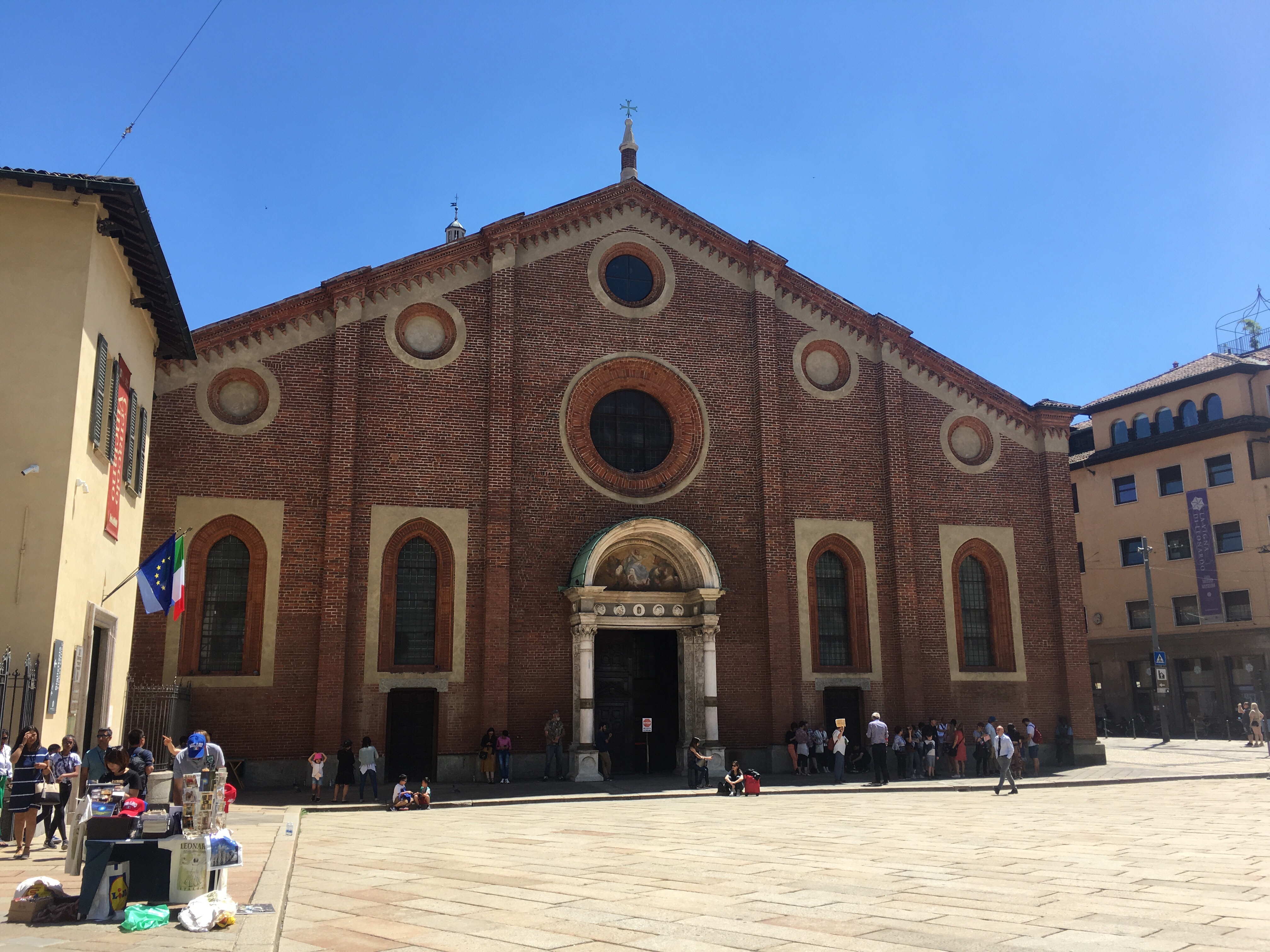
This church was commissioned to be built by the king so the people could come and pray for the monarchs. It is here that Leonardo DaVinci painted “The Last Supper,” completing it in 1498.
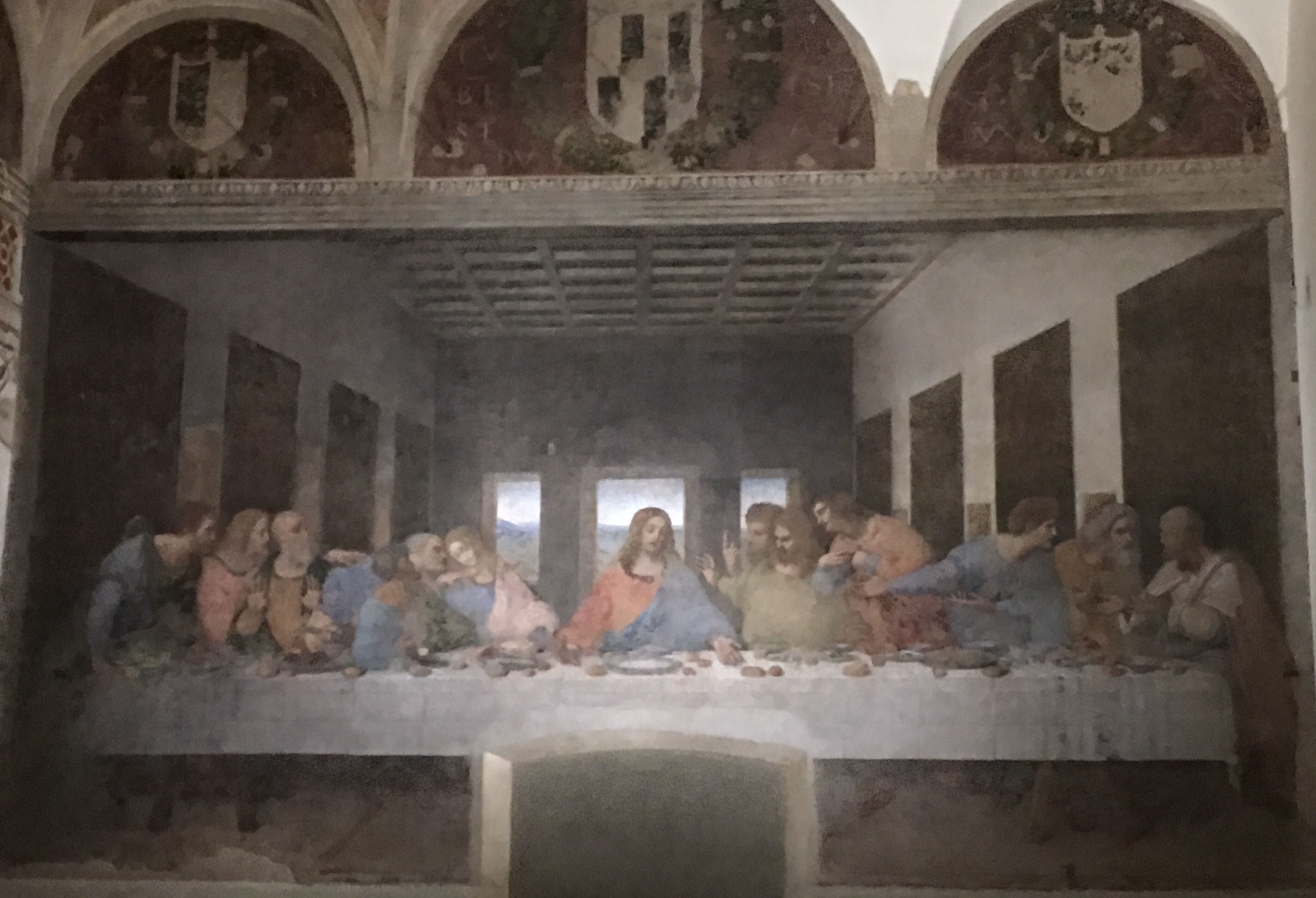
The Last Supper
Leonardo Da Vinci
He was paid a monthly stipend (like a retainer fee) to do what he preferred, so instead of painting “The Last Supper” all at once, it took him 22 years to finish ”The Last Supper.” This was because during the time he worked on “The Last Super,” he also worked on various other projects as well, including ”The Mona Lisa” (which he worked on for 60 years until his death). Regarding “The Last Supper,” Leonardo spent three years just to find a man whose portrait he could use to paint Judas. The dimensions of “The Last Supper” are approximately 160 x 350 inches as compared to the Mona Lisa, which is about 12 x 18 inches.
On the opposite wall of the church is the painting, “The Crucifixion” done by Giovanni Donato Montorfano in 1495.
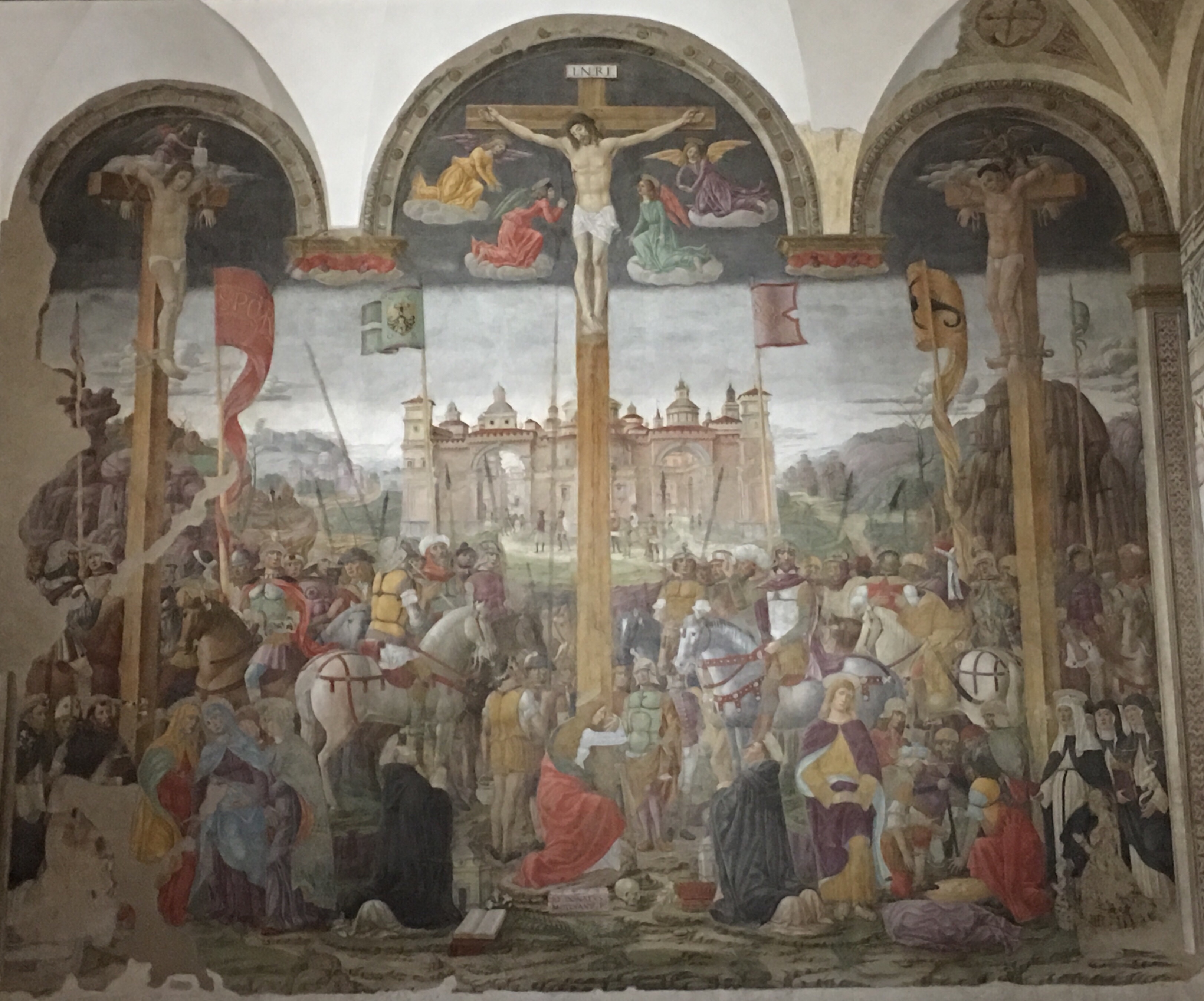
Duomo – Milan Cathedral
This world’s largest Gothic cathedral is in the city’s main square, the Piazza del Duomo. On the tallest spire is a golden statue of Mary, the mother of Christ. Its construction began in 1386, and it took more than 500 years to complete. To visit the interior of the cathedral, one must purchase a ticket.
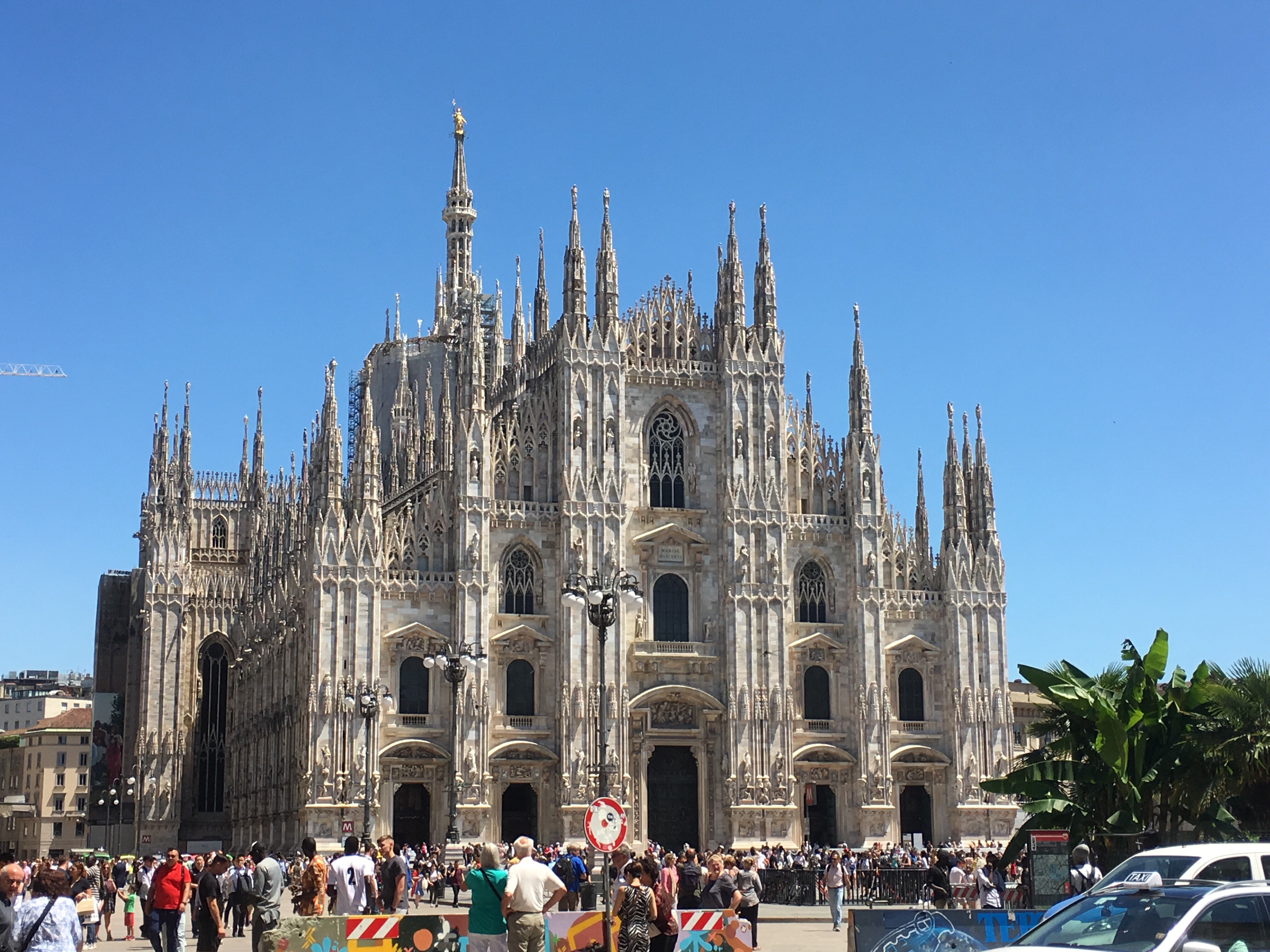
On one side of the main square is the Galleria Vittorio Emanuele II, a four story structure housing restaurants and stores that are very expensive. Prada’s original store is here as well as designers such as Louis Vuitton, Versace, and Chanel.
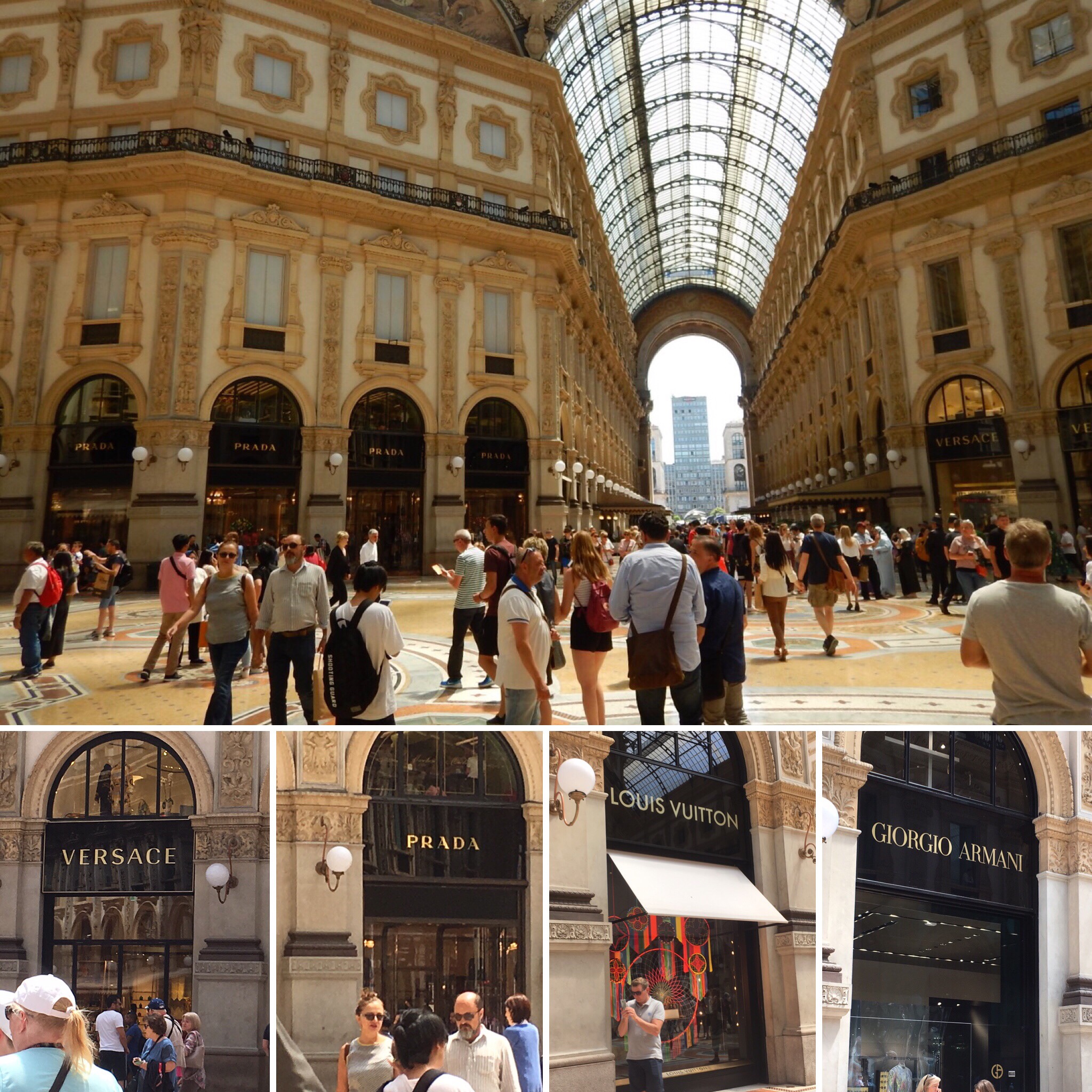
Our guide gave us free time to shop here. John and I just laughed to ourselves and headed out to find a gelateria.
La Scala Opera House
La Scala’s music season begins December 2nd. Here well-known operas and live concerts are held.
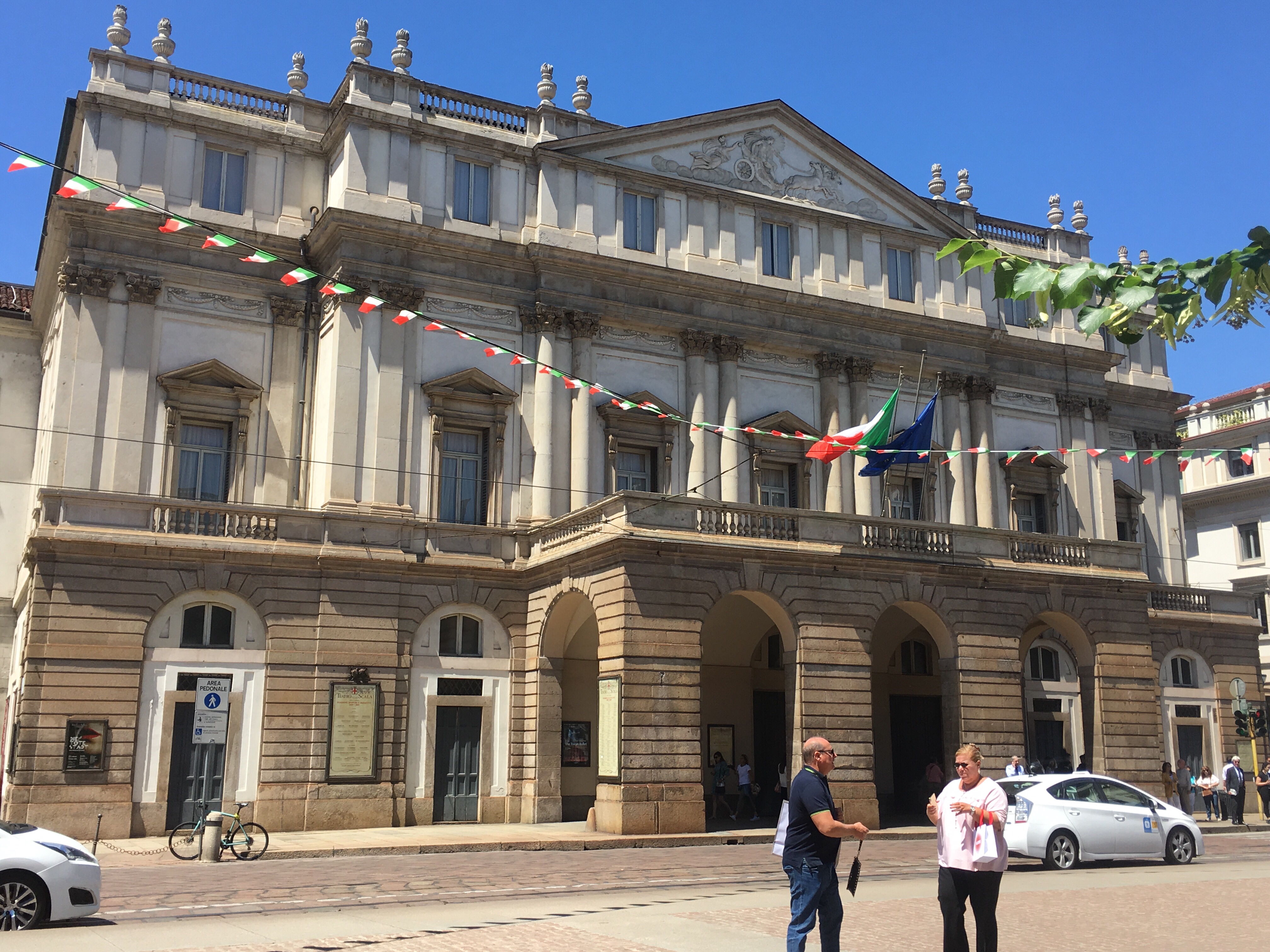
Across the street is Piazza della Scala, a small square with a statue of DaVinci.
Next stop: Florence, Italy
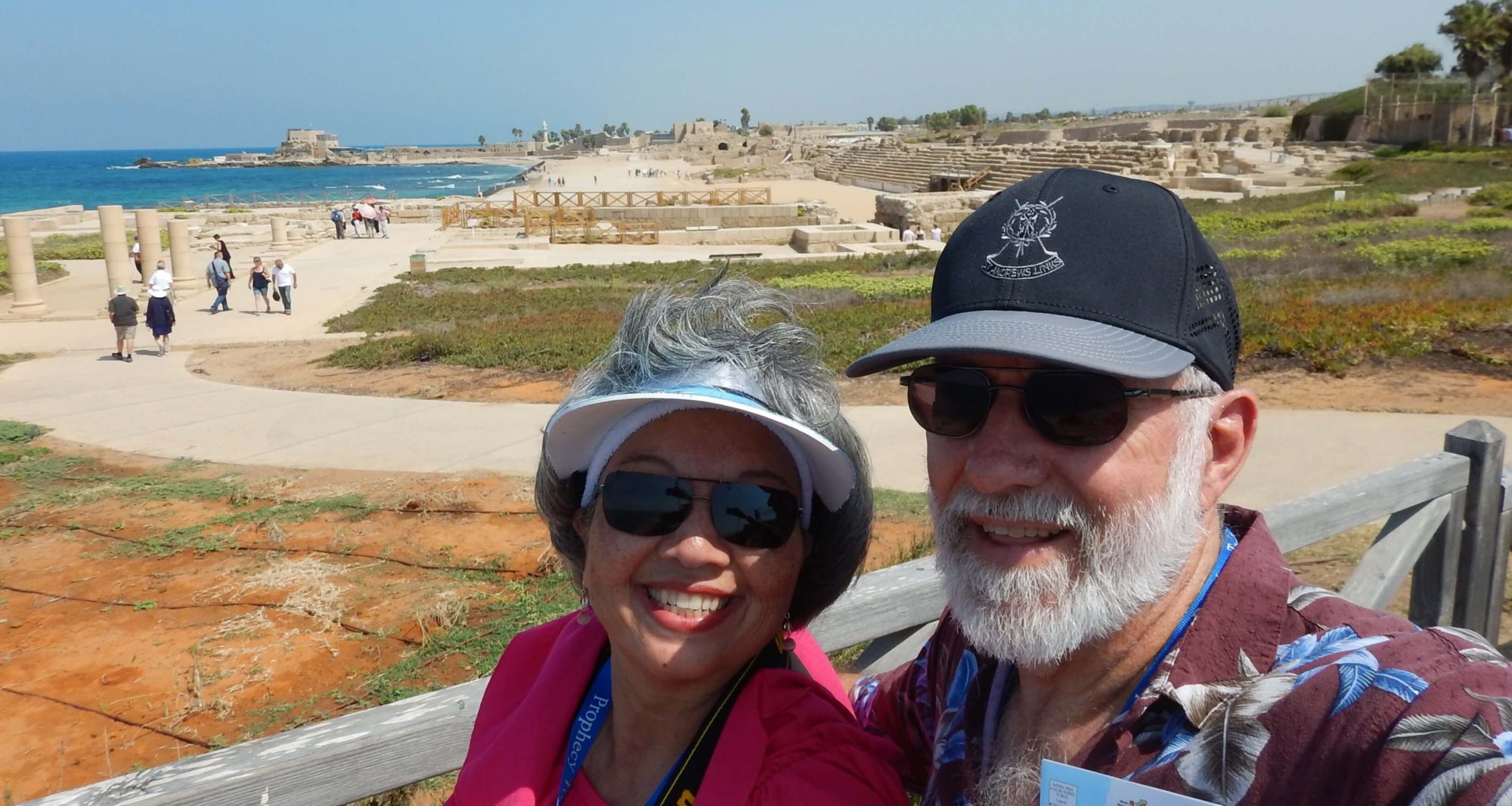
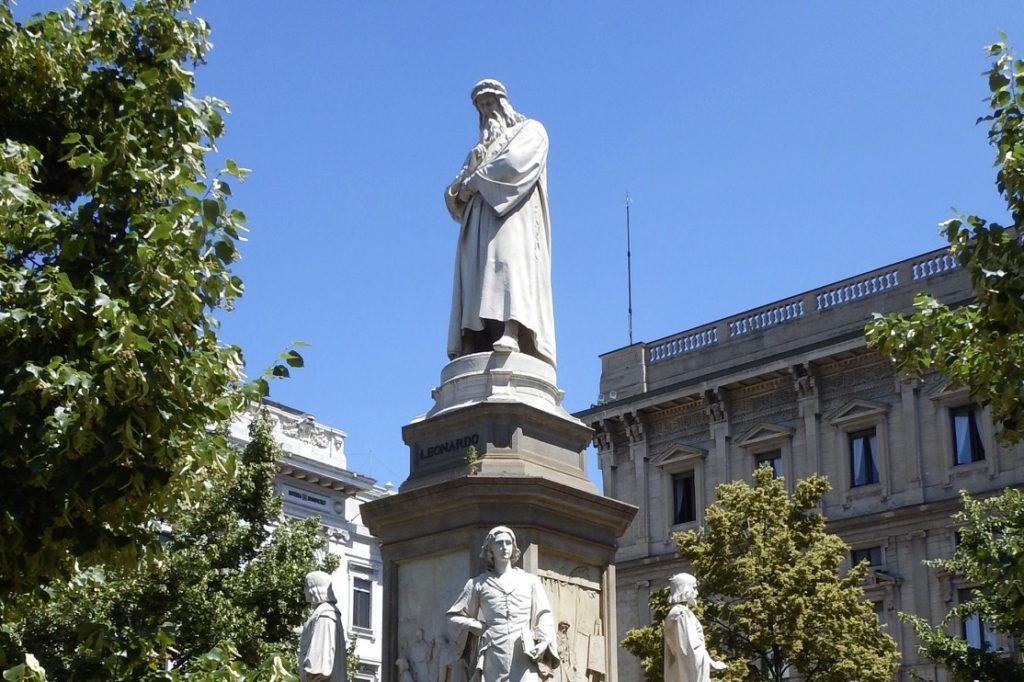
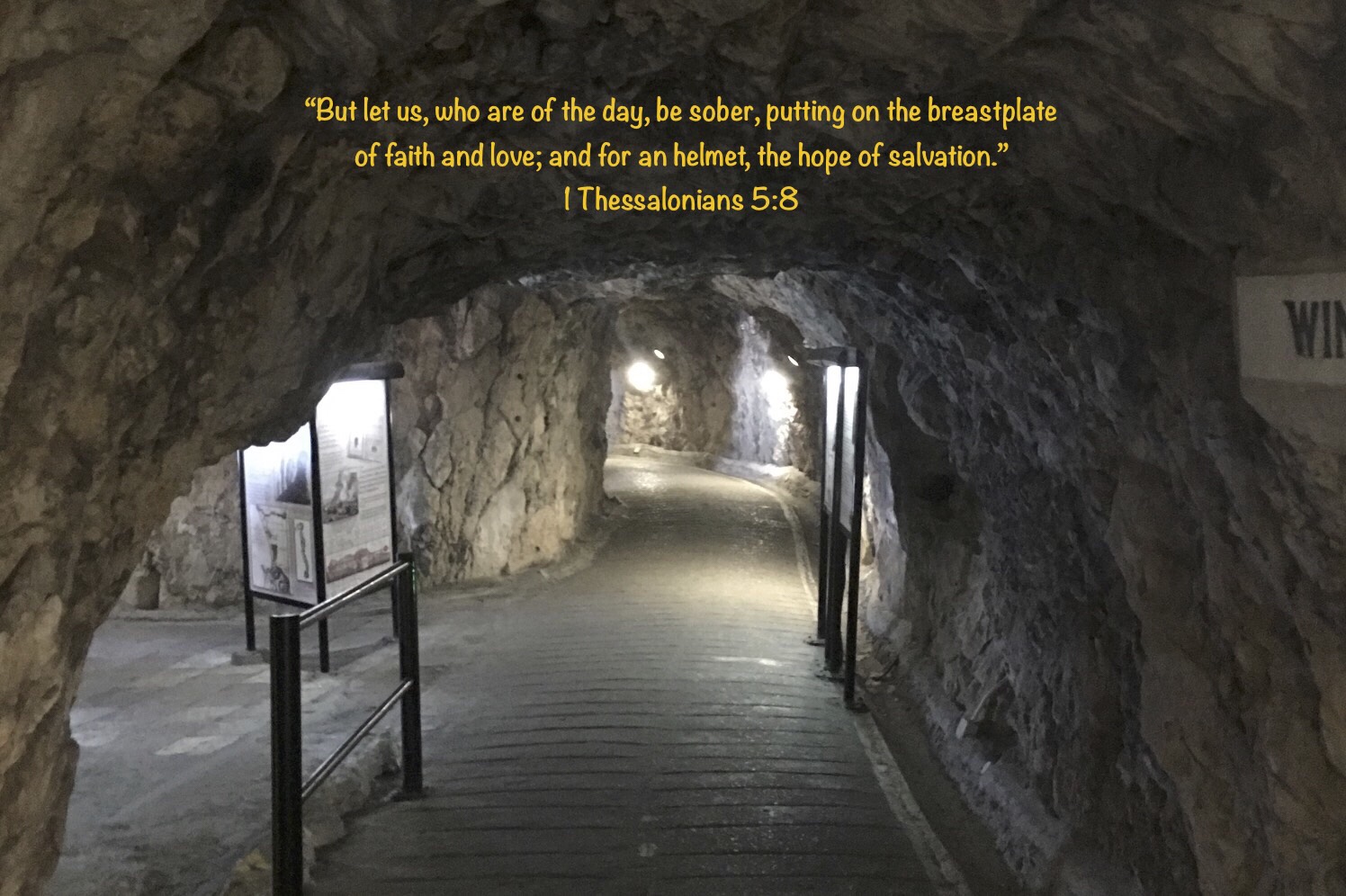
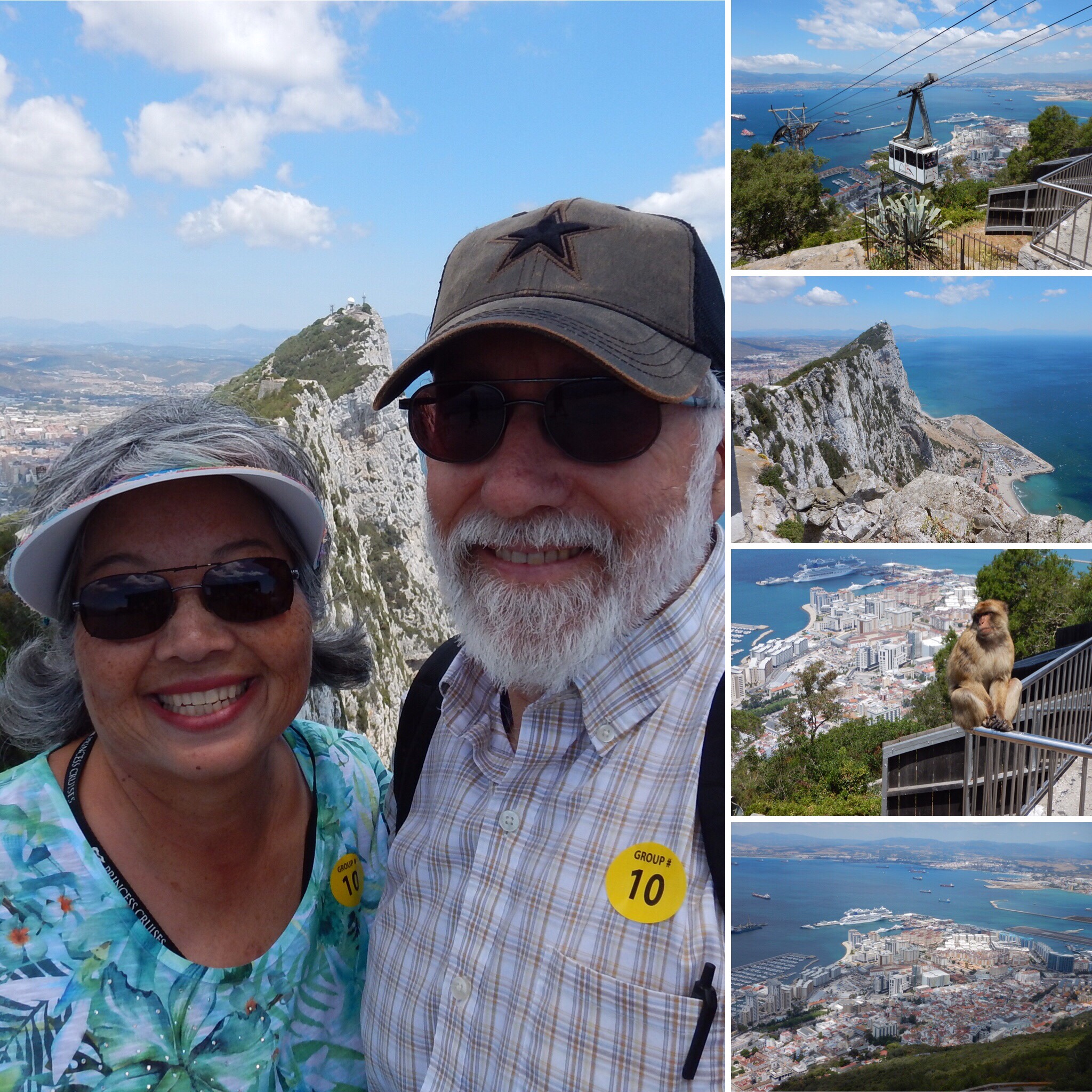
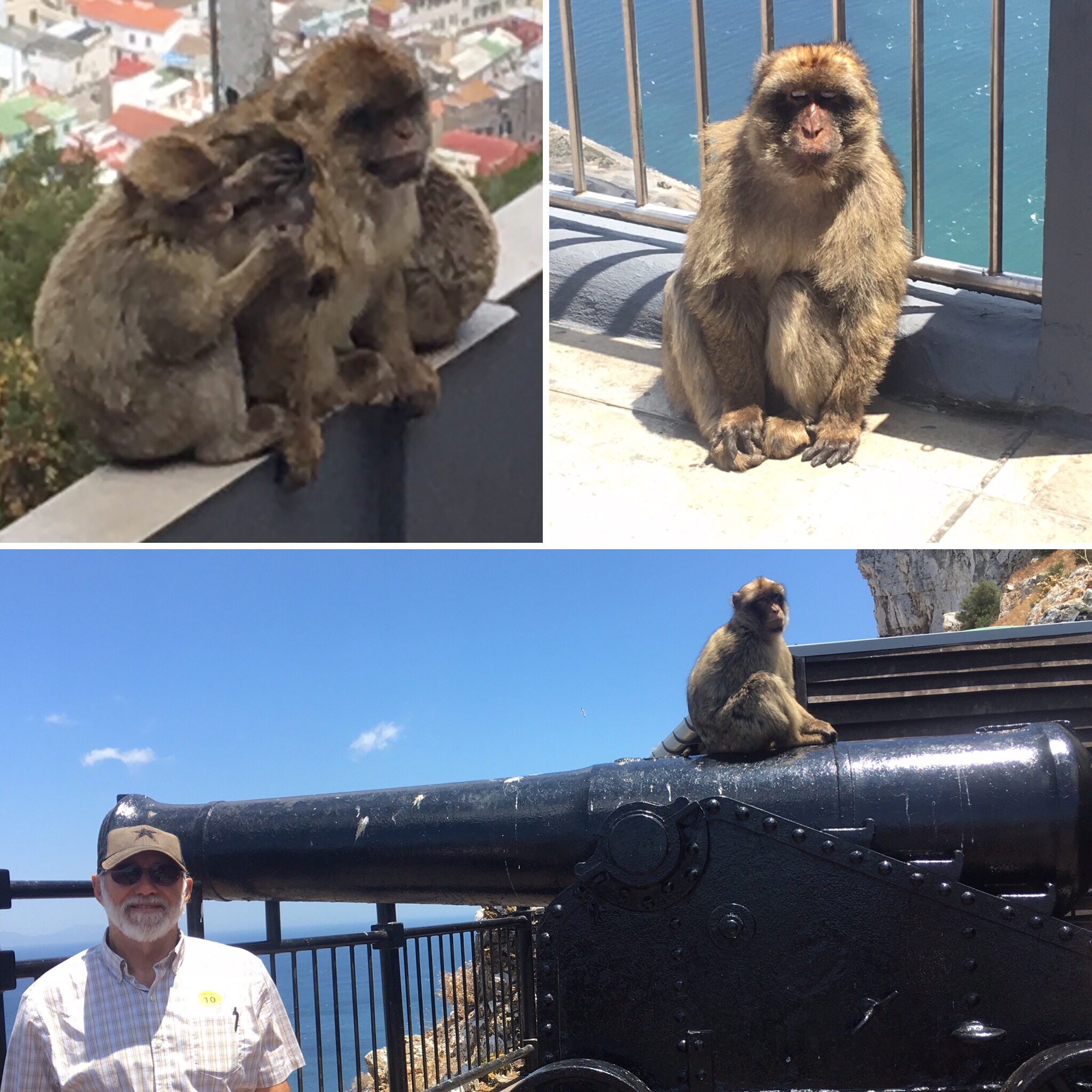
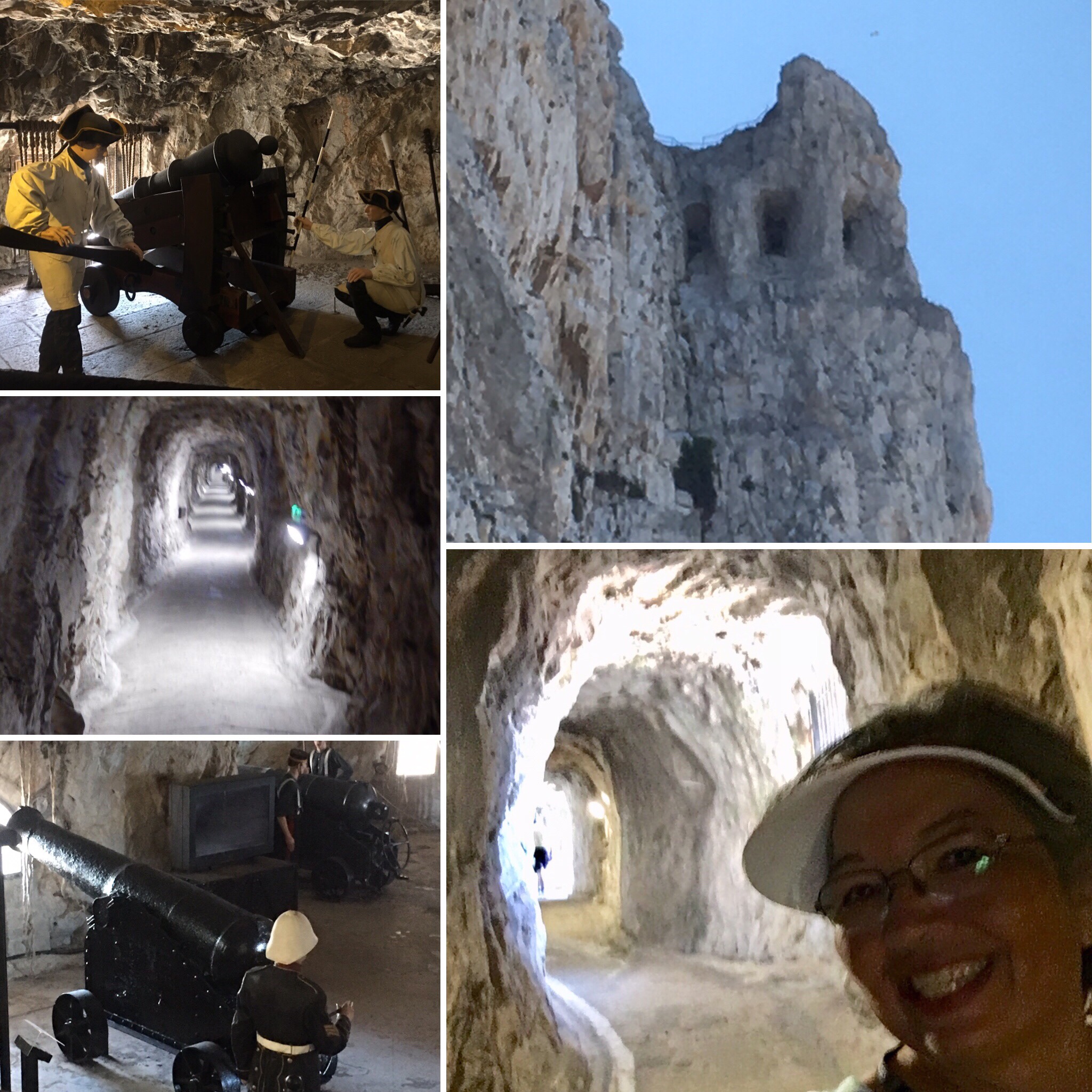
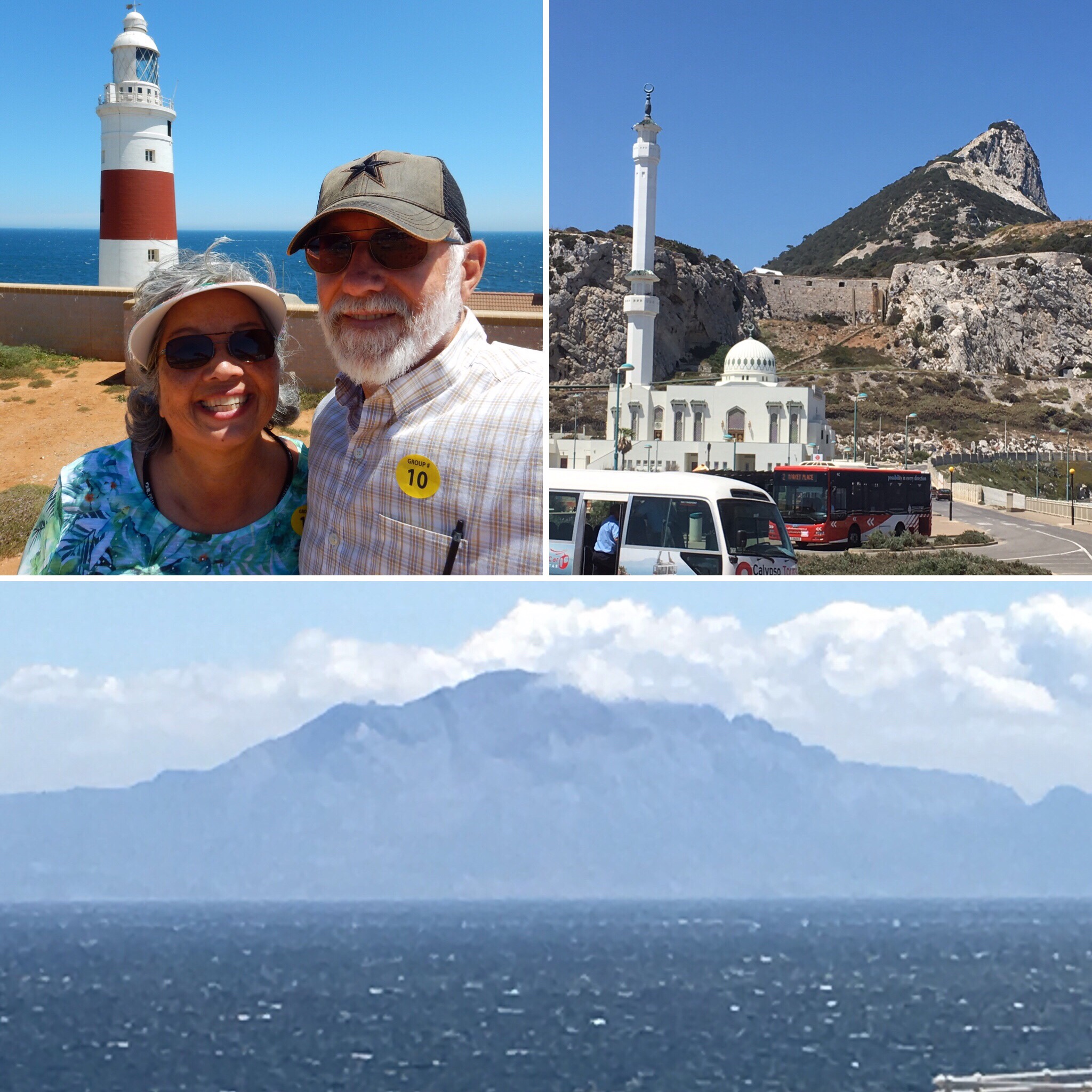 n
n